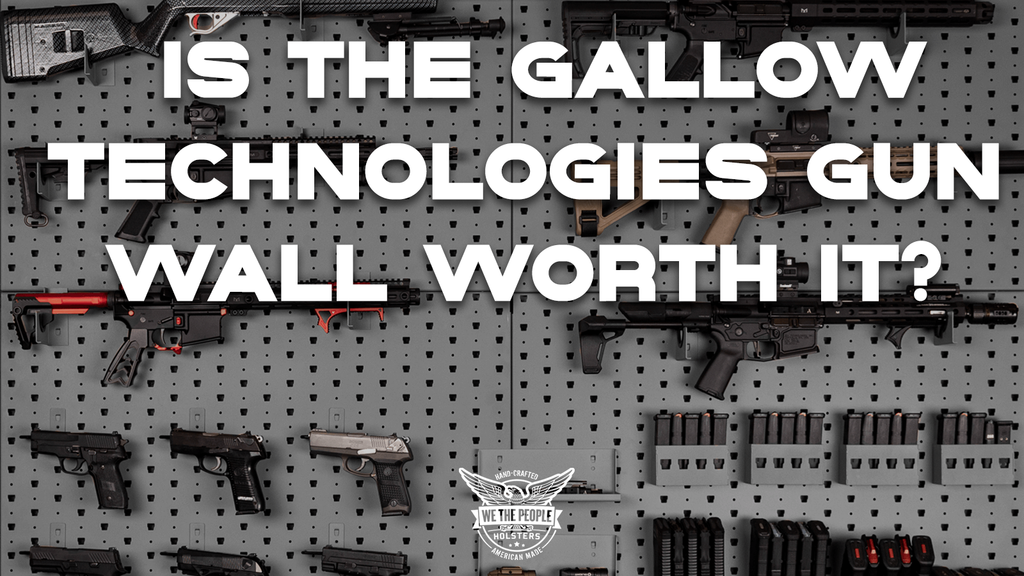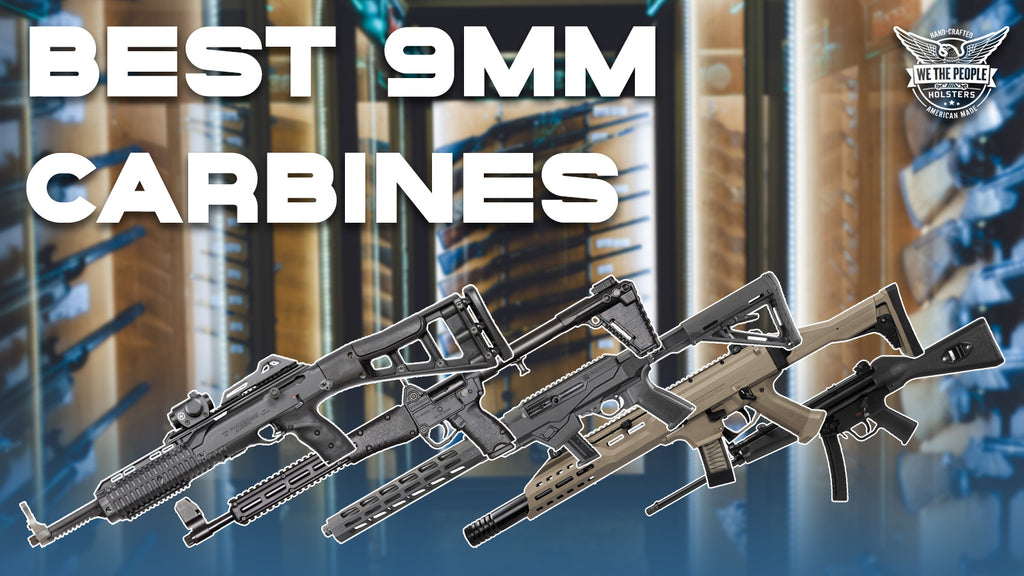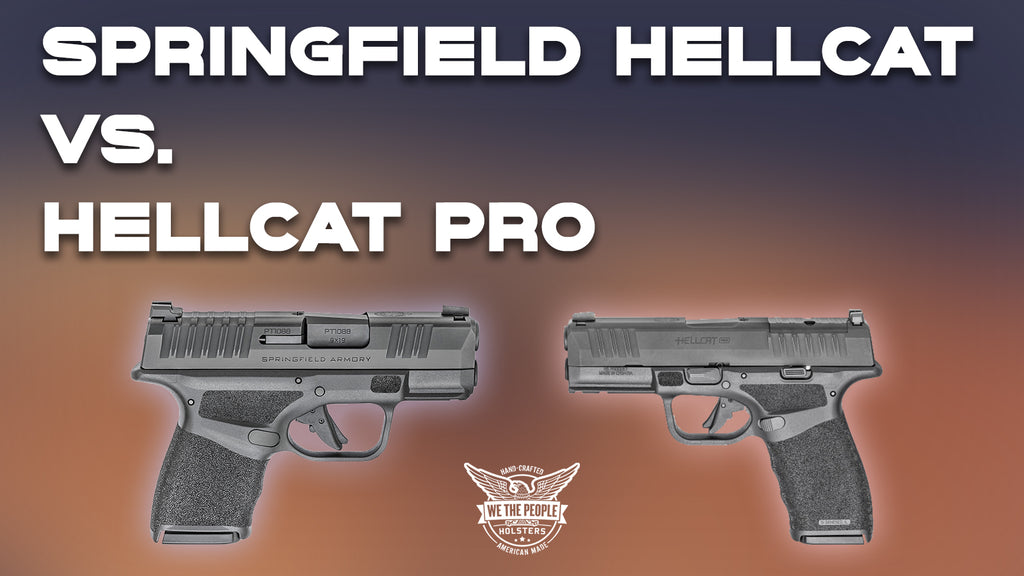Glock pistols are unquestionably among the most popular handguns in America today. With over 35 years on the United States market, Glock has become an established brand, offering over 30 different pistol models and numerous variants across 5 product generations.
If you’re looking to purchase your first Glock pistol, the options available on the market can be daunting. Follow this guide to determine which Glock model will most likely meet your specific needs.
Determining Your Use
At first, it may be tempting to ask, “Which Glock pistol is the best?” Although most Glocks are visually and mechanically similar, it is critical to understand the differences between each model, as each one was designed to fulfill a specific purpose and needs.
To find out which Glock is the best for you, you must first understand what features you can expect from every model, then determine what job you want your Glock pistol to fulfill. Once you know both, you can select your ideal Glock model.
Standard Glock Features

All Glock pistols are polymer-framed, striker-fired pistols equipped with Glock’s proprietary Safe-Action trigger and passive safety system.
Instead of dedicating a separate button or lever to the safety, Glocks feature a trigger-mounted lever that disengages automatically when the trigger is pulled. The pistol’s internal safeties are designed to prevent unintentional discharges, functioning as long as you aren’t pulling the trigger.
Most Glock pistols come with the same trigger pull weight, the same style of iron sights, and within models of the same generation, the same frame style, and grip texture. For example, all Generation 4 Glocks feature finger grooves and square stippled grips.
Making Sense of the Glock Lineup
Glock pistols are divided into the following criteria, from most to least important:
-
Product family
-
Caliber
-
Generation
Glock Product Families

The product family of a Glock indicates both the size and the recommended applications for a given pistol. Glock’s catalog divides its wide selection of handguns into five categories:
-
Standard: Full-size models based on the dimensions of the original Glock 17, primarily intended for military, police, and home defense applications.
-
Compact: Mid-sized pistols based on the Glock 19’s dimensions, the first reduced-size variant of the Glock 17.
-
Subcompact: Compact-sized models, primarily intended to be backup duty guns or concealed carry pistols. Most subcompacts trace their lineage to the double-stack Glock 26.
-
Competition: Target shooting and competition-oriented models with full-sized frames and extended-length barrels (5.31”), such as the Glock 34.
-
Long Slide: Similar to Competition models, but with even longer slides and barrels (6.02”), such as the Glock 17L.
In addition to the primary five categories, specific products may belong to a secondary category:
-
Crossover: Features the frame size from one primary category and the slide and barrel length from a different category. For example, the Glock 43X features a compact frame and a subcompact slide.
-
Slimline: Features a frame of reduced thickness and a single stack magazine, improving concealability and making it easier for people with smaller to shoot. For example, the Glock 43 is a slimline subcompact with a magazine capacity of six rounds.
-
MOS: Glocks featuring the Modular Optic System are compatible with a red dot sight.
Calibers
Glock pistols are available in a wide range of popular self-defense calibers. Currently, the Glock catalog includes the following chamberings:
-
9x19mm Parabellum: The original Glock 17 was chambered in 9mm, according to the specifications of the Austrian Army. Current 9mm models include the G17, G19, G19X, G26, G34, G43, G43X, G45, and G48.
-
.22 Long Rifle: Currently, only the Glock 44 (a G19-sized pistol) is available in .22 LR.
-
.40 S&W: .40-caliber models are descended from the Glock 22 introduced in 1990. Current .40 models include the G22, G23, G24, G27, and G35.
-
10mm Auto: The first large-frame full-size Glock, the G20, was chambered in 10mm Auto. Other models include the G29 and the G40.
-
.45 ACP: .45 ACP Glocks were made using the same frames as their 10mm Auto counterparts, resulting in the creation of the Glock 21. Other models include the G30, G30S, G36, and G41.
-
.45 GAP: .45 GAP is Glock’s proprietary .45-caliber cartridge designed to fit in standard 9mm-sized frames. Current .45 GAP models include the G37, G38, and G39.
-
.380 ACP: Currently, the only .380-caliber Glock approved for the U.S. market is the subcompact Glock 42.
-
.357 SIG: Uses the same frames as the .40 models due to the dimensional similarities between .40 S&W and .357 SIG. Current .357 SIG pistols include the G31, G32, and G33.
Generation

Glock pistols have been in production since the original first-generation Glock 17 in 1983. Over the years, the Austrian gunmaker has updated its lineup with new features, resulting in pistols of different generations.
Due to the ubiquity of Glock pistols, older-generation models are usually less expensive and easier to find used than equivalent latest-generation models. However, they may come with fewer desirable features.
-
Gen 1 (discontinued): Older American shooters may remember when the original Glock 17 was introduced to the U.S. market in 1986. This pistol is the only Gen 1 pistol you are likely to find, and they are seldom seen on the market anymore.
-
Gen 2 (discontinued): Introduced in 1988, the changes introduced with the second generation were largely minor and intended to meet ATF regulations. Gen 2 pistols are the oldest Glocks still commonly found on the used market.
-
Gen 3: The oldest generation still in production, introduced in 1998. Gen 3 is the first of the Glock generations to introduce finger grooves, a loaded chamber indicator, and the accessory rail.
-
Gen 4: Fourth-generation pistols were introduced in 2010 alongside minor, mostly ergonomic changes: a new square stippled grip texture and interchangeable backstraps for different hand sizes.
-
Gen 5: The latest-generation models first came out in 2018 and offered the most significant array of changes: removal of the finger grooves, new nDLC slide finish, ambidextrous controls, a new and highly accurate Glock Marksman Barrel, a reversible magazine catch, and a mildly flared magazine well.
What Job Does Your Glock Need to Fulfill?
When considering a new firearm, it is critical to determine what purposes you intend it to have. Knowing your pistol’s intended purpose helps determine a given model’s suitability. Here are guidelines on choosing a Glock for some of the most common applications.
Home Defense
If you primarily need a handgun for personal protection at home, you don’t need to worry about size or concealment. Select a full-sized pistol such as one of the Standard models. Choose the most powerful self-defense caliber (9mm, 40, .357, .45, 10mm) you can shoot accurately and confidently and use self-defense hollow-point ammunition made by a reputable manufacturer.
Concealed Carrying
If you need a Glock for concealed carrying, consider choosing a Compact, Subcompact, or Slimline model, and remember to pair it with a high-quality concealment holster. As with home defense pistols, choose the most powerful caliber you can shoot confidently and load your magazines with quality HP ammunition.
Target Shooting / Competition
If you need a quality handgun for competitive target shooting, consider one of the Competition or Long Slide models. Although any of these is generally suitable for competition, the caliber you need depends on your shooting discipline’s rules and requirements. If red dot sights are allowed, look for a MOS version of your preferred model.
Find the Best Holsters for Your Glock at We The People Holsters
Here at We The People Holsters, we are committed to crafting the highest-quality handmade gun holsters for the American people, no matter their experience or background. If you’re considering a Glock pistol, shop our wide selection of IWB and OWB holsters to carry it as safely and confidently as possible.





